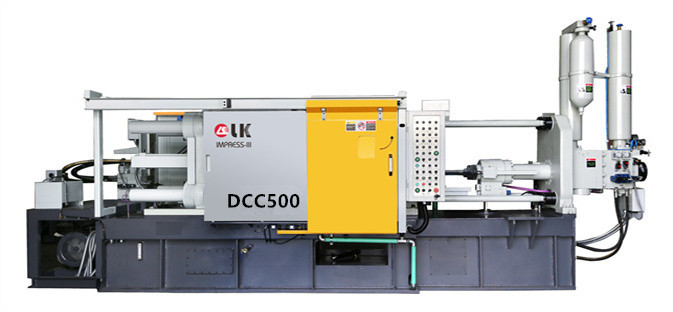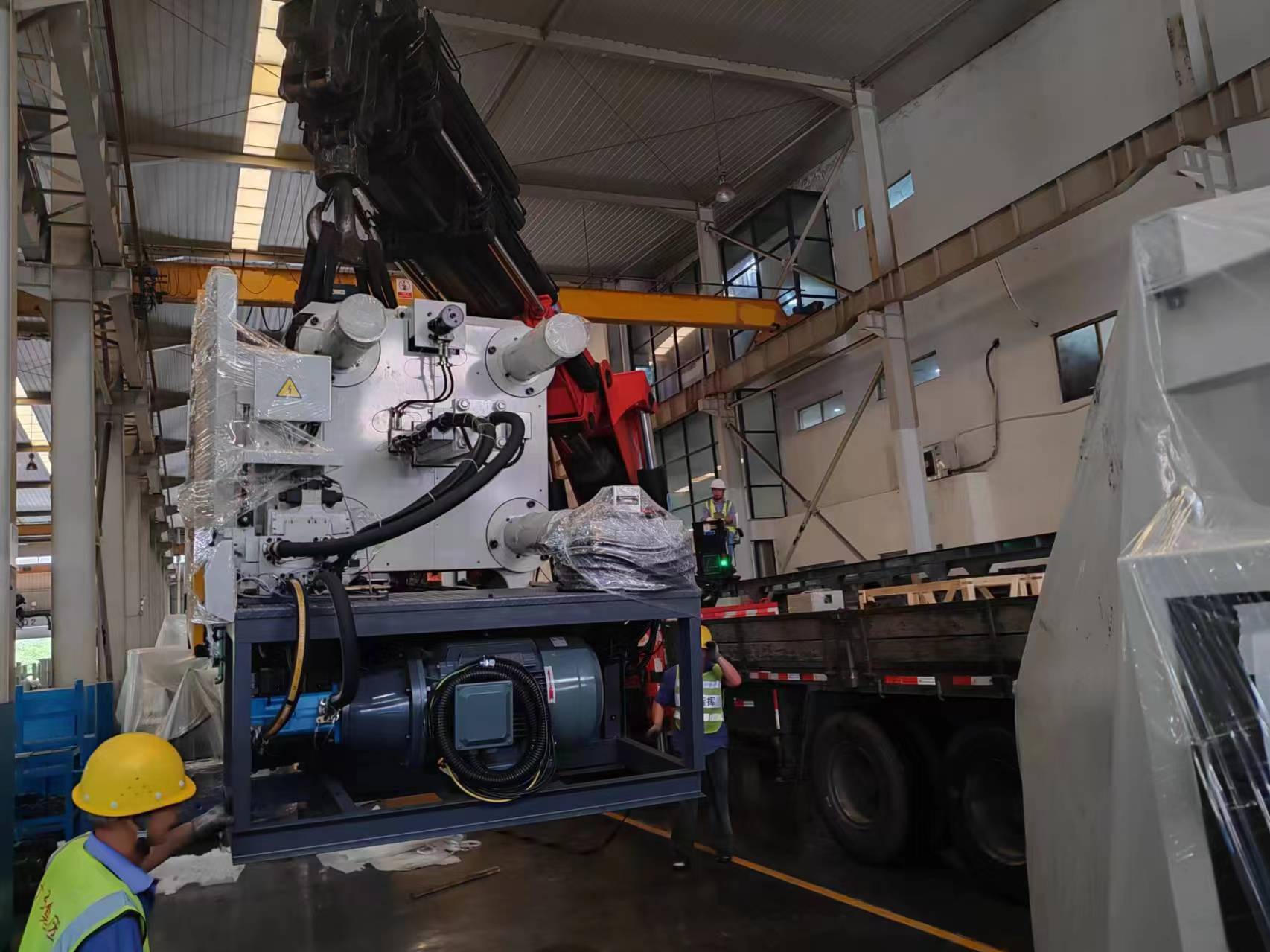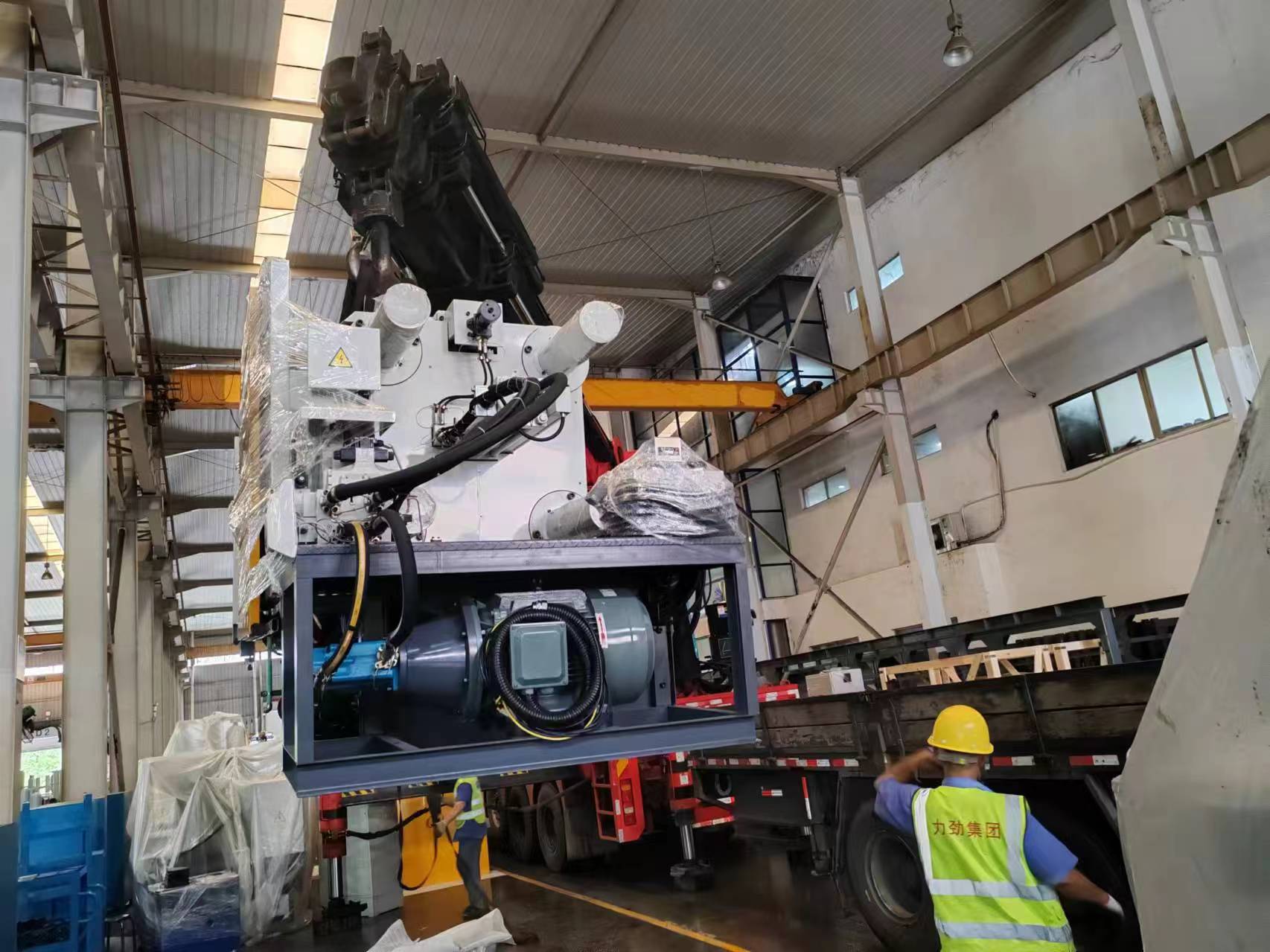Cold Chamber Die Casting
LK Die Casting Machine / 2024-07-29 10:28:19
2024-07-29 By Cherry
Cold chamber die casting is an efficient and precise metal forming process, that is widely used in the fields of automobiles,
aerospace, electronic products, etc.

Basic principles of cold chamber die casting
Cold chamber die casting is a method of rapidly cooling and forming by injecting molten metal into a mold in a cold chamber.
Unlike hot chamber die casting, the metal furnace of cold chamber die casting is separated from the die casting machine,
which is suitable for the processing of high melting point metals such as aluminum, magnesium, and copper.
Equipment and process of cold chamber die casting

Die casting machine: The cold chamber die casting machine is one of the key equipment.
It includes an injection system and a mold system that can inject molten metal into the mold under high pressure.
Cold chamber die casting machines have a variety of specifications and are suitable for production needs of different scales.
Outsourced casting: Some companies choose to outsource cold chamber die casting to professional die casting plants to save
costs and utilize professional equipment and technology.
Outsourced casting can improve production efficiency and ensure the quality of castings.
Material selection for cold chamber die casting
Wrought aluminum: wrought aluminum is a commonly used die casting material with excellent mechanical properties and corrosion
resistance.
It is widely used in products with high strength requirements such as automotive parts and aerospace equipment.
Aluminum tin alloy: Aluminum tin alloy is also used in cold chamber die casting. Its main advantages are low density, high strength
and good wear resistance.
It is suitable for manufacturing various mechanical parts and structural parts.
Cold chamber die casting advantages and disadvantages
Die casting advantages:
High precision: Cold chamber die casting can produce complex parts with high precision and reduce the need for subsequent processing.
High efficiency: Suitable for mass production, short production cycle of single parts.
High material utilization: Cold chamber die casting can reduce material waste through optimized design and process control.
Die casting disadvantages:
High mold cost: The design and manufacturing cost of the mold is high, which is suitable for large-scale production.
Casting defects: Defects such as pores, cold shuts, and shrinkage cavities may occur, which need to be controlled by optimizing the process
parameters.

Casting surface treatment and defect control
E coating aluminum: In order to improve the corrosion resistance and aesthetics of castings, castings are often e coating aluminum.
E coating aluminum can increase the surface hardness and wear resistance of castings.
Investment casting surface finish: Compared with cold chamber die casting, investment casting has a higher surface finish, but cold
chamber die casting can achieve similar results through subsequent processing and surface treatment.
Aluminum die casting defects: Common aluminum die casting defects include pores, cold shuts, and shrinkage cavities.
By optimizing die casting process parameters and mold design, the occurrence of these defects can be effectively reduced.
Casting cracks: Casting cracks are one of the common problems in the die casting process. The occurrence of cracks is usually
related to mold design, cooling rate, and material composition.
By optimizing these factors, the occurrence of casting cracks can be reduced.
Application of cold chamber die casting in various industries
LK casting products: LK owns many important casting product production bases worldwild, and cold chamber die casting
has been widely used here. The main products include automotive parts, mechanical equipment, and electronic product housings.
Automotive industry: Cold chamber die casting is particularly widely used in the automotive industry. Cold chamber die casting technology
can produce high-strength and lightweight automotive parts such as engine blocks, gearbox housings, and suspension system components.
Pressure die casting pdf: Technical literature and standard materials for cold chamber die casting are usually published in PDF format for reference
by engineers and technicians.
These materials provide detailed information on the process flow, material selection and quality control methods of cold chamber die casting.
Comparison of aluminum alloys with other materials
La aluminum casting: La aluminum is one of the most commonly used materials in cold chamber die casting.
Aluminum alloys have excellent mechanical properties and corrosion resistance and are widely used in automotive, aerospace, and electronic
products.
Magnesium vs aluminum strength: Both magnesium and aluminum are lightweight and high-strength metal materials.
In contrast, magnesium has a lower density, but aluminum has better comprehensive mechanical properties.
Therefore, in practical applications, the appropriate material is often selected according to specific needs.
Physical properties and applications of aluminum
Aluminum benefits: aluminum benefits are lightweight, having good conductivity, corrosion resistance, and easy processing.
It is widely used in construction, transportation, electronics, and packaging.
How much heat can aluminum withstand: The melting point of aluminum is about 660°C
In practical applications, the heat resistance of aluminum alloys is usually optimized through alloy composition and heat treatment
processes to meet the needs of different working environments.
The thickness of an aluminum can: The thickness of an aluminum can is usually between 0.2-0.5 mm.
Through the cold chamber die casting process, aluminum cans with uniform wall thickness and stable quality can be produced, which are
widely used in food and beverage packaging.
Combination of casting and machining
Casting: Casting is the process of injecting molten metal into a mold and cooling it to form. Cold chamber die casting is an efficient
casting method suitable for mass production.
Casting and machining: Casting is closely related to machining.
Casting is a molding process, while machining is the finishing of castings by cutting, grinding, and other methods. The combination of the
two can produce high-precision, high-quality parts.
Environmental protection and sustainable development
Do you recycle aluminum: The recycling of aluminum has important environmental significance.
By recycled aluminum, resource waste and energy consumption can be reduced, and production costs can be reduced.
The recycling rate of aluminum is as high as 95%, making it one of the most environmentally friendly metal materials.
Trivalent chromium and hexavalent chromium: In the surface treatment process, trivalent chromium and hexavalent chromium are commonly
used chemical elements.
Trivalent chrome vs hexavalent chrome: trivalent chrome is more environmentally friendly and less harmful to the human body and the environment, while hexavalent
chrome has stronger corrosion resistance.
In practical applications, the appropriate treatment method should be selected according to specific needs.
Conclusion
Cold chamber die casting, as an efficient and precise metal forming process, plays an important role in modern manufacturing.
For more info, you can refer to: https://www.youtube.com/shorts/JLX410QV_kw
Contact LK Egypt to learn more info about the die-casting machine
LK AGENT OFFICE DCM
Address: Industry Zone, South of Port Said Kebly, Egypt
https://www.zazdiecasting.com/
Phone/WhatsApp/Wechat: +86 13598704163
Mobile: +20 101 304 3317 +20 150 181 8310
Email: jack@zazmae.com ahmedmahmoud@zazmae.com
OTHER CONTENT
-

2024-09-19 14:16:15 LK Cold Chamber Die Casting Machine DCC900 Locking Force: 9000KN Die Height: 400-1000mm Space Between Tie Bars: 930x930mm Shot Weight: 13.5Kg Casting Area Max:2250c㎡
More -

2024-09-19 14:11:06 LK Cold Chamber Die Casting Machine DCC280 Locking Force: 2800KN Die Height: 250-650mm Space Between Tie Bars: 560x560mm Shot Weight: 2.9Kg Casting Area Max:700c㎡
More -

2024-09-19 10:23:07 LK Cold Chamber Die Casting Machine DCC580 Locking Force: 5000KN Die Heigh: 350-850mm Space Between Tie Bars: 760x760mm Shot Weight: 6.9Kg Casting Area Max:1250c㎡
More -

2024-09-19 10:11:20 LK Cold Chamber Die Casting Machine DCC400 Locking Force: 4000KN Die Height: 300-700mm Space Between Tie Bars: 669x669mm Shot Weight: 4.7Kg Casting Area Max:1000c㎡
More

